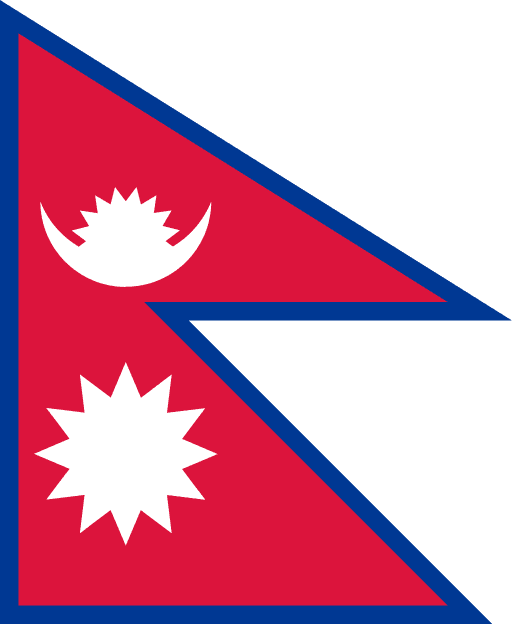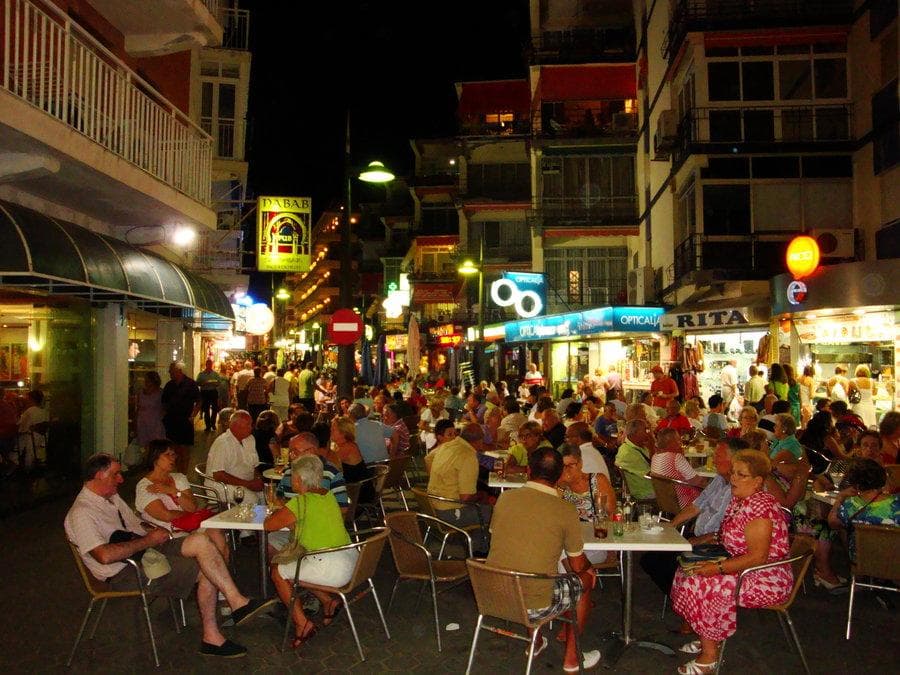-
(#1) United States of America
- Washington, D.C.
Total Population: 332.6 million
First Case: Jan. 20, 2020. One day earlier, a man in his 30s visited an urgent care clinic in Washington state. He reported recent travel to Wuhan, China. Based on his travel history, the Washington Department of Health notified the CDC. On Jan. 20, the CDC reported a positive COVID-19 test.
Initial Reaction: On Jan. 22, President Trump made his first public remarks on COVID-19. "We have it totally under control," Trump told CNBC. "It’s one person coming in from China, and we have it under control. It’s going to be just fine.”
On Jan. 31, the United States banned visitors who had recently traveled to China.
On Feb. 19, Trump said, “I think the numbers are going to get progressively better as we go along.”
Evidence of community transmission in Washington, Oregon, and California appeared at the end of February. In early March, Trump called COVID-19 "very mild" and said the death toll would be much smaller than the flu.
By mid-March, the US reported thousands of cases across the country. California became the first state to issue a statewide shelter-in-place order on March 19, quickly followed by other states.
-
(#2) Sweden
- Stockholm
Total Population: 10.2 million
First Case: Jan. 31, 2020. Sweden reported its first official case of the novel coronavirus early in the epidemic. However, Sweden took a different approach than other countries.
Initial Reaction: Sweden chose not to close its borders or shut down major sectors of the economy in response to coronavirus. “Closing borders at this stage of the pandemic, when almost all countries have cases, to me does not really make sense,” said Anders Tegnell, the state epidemiologist.
By late March, Sweden did limit gatherings of more than 50 people.
“For us, a total lockdown is a disaster,” hotelier Elisabeth Hatlem says. “But I am worried Sweden will explode at some point. I feel like I’m living in a huge experiment, and I was never asked if I wanted to sign up.”
-
(#3) India
- New Delhi
Total Population: 1.3 billion
First Case: Jan. 30, 2020. In response, Indian authorities argued that the case was an isolated incident and claimed that community transmission had not occurred in the country.
Initial Reaction: India maintained strict restrictions on testing for COVID-19, and only began testing people without a travel history to an infected area in mid-March. The government also limited testing for healthcare workers treating patients with the novel coronavirus.
After initially downplaying the danger of COVID-19, Prime Minister Modi announced a lockdown on March 24.
India began a 21-day lockdown to slow the spread of COVID-19. However, for the 74 million Indians who live in urban slums, social distancing remains nearly impossible.
-
(#4) Taiwan
- Taipei
Total Population: 23.6 million
First Case: Jan. 21, 2020. Just 80 miles off the coast of mainland China, Taiwan managed to slow the spread of COVID-19 through aggressive action.
Initial Reaction: As reports of the epidemic surfaced in January, Taipei implemented 124 safety protocols to control the disease. The tools included an educational outreach program to warn people about the dangers, tech-based tracking, extensive screening of travelers from Wuhan, and contact tracing for suspected cases.
Taiwan implemented its screening program in mid-January, quarantining anyone with symptoms. Experts from Taiwan also visited China to gain more information about the epidemic.
On Jan. 26, Taiwan banned flights from Wuhan, becoming the first country to take that step. By late February, the government distributed 6.5 million masks to the public. Buildings and schools also began screening people for signs of fever.
-
(#5) China
- Beijing
Total Population: 1.39 billion
First Case: Jan. 7, 2020. In late December 2019, China first reported cases of pneumonia seemingly linked to the Huanan Seafood Wholesale Market located in Wuhan. By Jan. 7, they found that the outbreak was due to COVID-19. On Jan. 11, China reported its first death from novel coronavirus.
Initial Reaction: On Jan. 23, China ordered a lockdown of Wuhan, the epicenter of the outbreak, and other cities in Hubei province. The move quarantined at least 50 million people.
China built two new hospitals to handle overflow cases, completing them in just over one week. In Wuhan, the government prioritized contact tracing, creating over 1,800 teams dedicated to tracing contacts with infected individuals. Chinese authorities also used mobile apps to track people's movements and enforce travel restrictions. Drones monitored the streets, enforcing orders to wear a mask at all times and ordering people to go home.
After reporting a dramatic decrease in the number of cases China lifted their lockdown of Wuhan on Apr. 8. Wuhan Epidemic Control Official Luo Ping, however, said that opening the city "does not mean the all-clear, neither does it mean a relaxing of epidemic prevention and control measures"
-
(#6) Russia
- Moscow
Total Population: 141.7 million
First Case: Jan. 31, 2020. After its first two cases were reported, Russia began a massive testing push, ultimately testing over 190,000 people by late March. Russia also created a reserve of 700,000 tests.
Initial Reaction: Russia closed its border with China in late January.
For over a month after identifying the first case, Russia did not institute any significant restrictions within the country. “We were able to contain the mass penetration and spread [of COVID-19]” President Putin said in mid-March. “The situation is generally under control despite high risk levels.”
In late March, Russia saw a spike in cases and instituted new restrictions. The government stopped international travel, ordered older Moscow residents to stay home, and closed schools.
Several independent reports claim that Russia significantly undercounted coronavirus cases in the first two months of its outbreak. In particular, the country saw a major increase in pneumonia and influenza cases that may have been misdiagnosed cases of COVID-19.
-
(#7) France
- Paris
Total Population: 67.8 million
First Case: Jan. 24, 2020. After the first diagnosed case in China, France began monitoring for coronavirus cases and instituted a policy of contact tracing. Three cases were discovered in late January. The first case, a man in his 40s, had recently traveled to Wuhan for business, while the second and third cases were Chinese tourists visiting France.
Initial Reaction: France reported its first three cases in a press conference on Jan. 24, 2020. They notified the European Center for Disease Prevention and Control. These cases were the first in Europe. France immediately traced all contacts in the country for the three cases, identifying no additional transmissions. However, the epidemic continued to spread through additional travel-related cases and, by March, community transmission. On March 16, 2020, France became the third European country to institute a lockdown in response to the epidemic.
Before going outside, French citizens must fill out a form justifying their trip. Acceptable reasons for leaving home include helping sick relatives, buying essential supplies, or exercising alone. Anyone who fails to fill out the form faces a $146 fine.
-
(#8) Japan
- Tokyo
Total Population: 125.5 million
First Case: Jan. 14, 2020. Japan's first confirmed case of COVID-19 was a man in his 30s who had recently traveled to Wuhan.
Initial Reaction: On February 3, Japan stopped admitting people who had traveled to Hubei province. Japan instituted strict testing criteria, only offering tests to those with a fever lasting more than four days or who had other health vulnerabilities. Rather than imitating the widespread testing done in South Korea, Japan tested a small number of people most likely to have the disease.
On February 27, 2020, Prime Minister Shinzo Abe shut down public schools, and the government encouraged people to socially distance.
In contrast to the widespread closures in the US and Europe, Japan advised people to “continue to avoid environments that simultaneously meet the following three conditions: poor ventilation, dense crowds, and dense conversation.”
Though the number of confirmed cases has been relatively low compared to Europe and the US, the government fears that a potential surge in cases could overwhelm the country's healthcare system. On April 7, Abe declared an official state of emergency. In his televised speech to the nation, Abe announced that law enforcement will be given the authority to expropriate land for medical facilities and force companies to sell medical supplies and necessary resources if public health demands it.
The Prime Minister, however, made it clear that the state of emergency is not a lockdown. "Public transport will run as usual, and no roads will be closed," he said. "There is no need for that. That is the view of the experts."
-
(#9) Iran
- Tehran
Total Population: 84.9 million
First Case: Feb. 19, 2020. Iran reported its first two deaths from coronavirus before reporting a single case. The outbreak began in Qom, a major pilgrimage destination.
Initial Reaction: In late February, the deputy health minister, Iraj Harirchi, declared, "Quarantines belong to the Stone Age." The next day, he tested positive for COVID-19.
Iran kept shrines and religious sites open through February. Many leaders and lawmakers tested positive for the disease, including dozens of members of Parliament. The government insisted that the outbreak was not a major problem. Reports claimed that security agents were actively suppressing information about COVID-19 fatalities.
In mid-March, Iran temporarily released 85,000 prisoners to stop the spread in jails.
In late March, with official case numbers at 15,000, an Iranian doctor told Time, “There is absolutely no doubt that the number of sick people is much higher. Realistically, at this point, you need to change the reported sick cases to 1 million.”
-
(#10) United Kingdom
- London
Total Population: 65.7 million
First Case: Jan. 31, 2020. The UK reported its first case in York, with numbers growing through February and March.
Initial Reaction: Initially, the government declined to ban events, claiming it would have minimal impact. Prime Minister Boris Johnson did not speak publicly on COVID-19 until March 12. He declined to recommend canceling large gatherings. The country's chief science advisor proposed a "herd immunity" strategy, letting the infection spread across 60% of the country's population. But after pushback based on the high death rate of that strategy, Johnson recommended self-isolation for sick people. He also suggested avoiding nonessential travel, pubs, and social venues. Johnson's father stated he would continue visiting pubs, and the government did not enforce recommendations on social distancing and avoiding public spaces.
In late March, the UK began a lockdown and Boris Johnson tested positive for the virus.
-
(#11) Italy
- Rome
Total Population: 62.4 million
First Case: Feb. 20, 2020. The first recorded case was when a 38-year-old man in Lombardy tested positive, though many experts believe the virus was in Italy before that.
Initial Reaction: Initially, Italy created a red zone in the northern provinces reporting the most cases. In 11 towns in Lombardy, with a total population of 50,000 people, residents were told to stay home for 15 days. Italy's case numbers quickly rose, until Italy reported more cases and fatalities than any country outside of China in early March.
The virus likely spread undetected for weeks. According to Flavia Riccardo, a researcher at the Italian National Institute of Health, “This started unnoticed which means by the time we realized it, there were a lot of transmission chains happening."
In early March, Prime Minister Giuseppe Conte announced a nationwide lockdown. “We all must give something up for the good of Italy,” Conte said. “There is no more time.”
On April 14, Italy began easing the lockdown in certain industries and regions. Select shops including bookshops, laundries, and children clothing stores were allowed to reopen, while select manufacturers for IT and computer parts, as well those in the forestry industry, were allowed to return to work.
-
(#12) Brazil
- Brasília
Total Population: 211.7 million
First Case: Feb. 26, 2020. Brazil reported the first case of coronavirus in Latin America. The disease reached Brazil after a Brazilian man traveled to Italy.
Initial Reaction: The Brazilian government downplayed the threat of coronavirus, claiming it was not a major issue. In late March, President Jair Bolsonaro declared that Brazilians "never catch anything," and also suggested that many people had already been infected and recovered, and "have already got the antibodies that help it not to proliferate." As local authorities imposed social distancing measures, Bolsonaro undermined their efforts, calling local governors "job-killers."
A congressman who once supported Bolsonaro said, “It’s pretty clear he is primarily interested in his re-election and very little about actually fighting coronavirus."
-
(#13) South Africa
- Bloemfontein, Cape Town, Pretoria
Total Population: 56.4 million
First Case: March 3, 2020. The first confirmed cases came from people who visited Milan for a ski trip.
Initial Reaction: South Africa isolated people who tested positive and began tracing their contacts. The government announced, "We categorically state that there are no other COVID-19 positive patients in South Africa."
In mid-March, as numbers continued to grow, South Africa became the first African country with over 100 cases and the government banned visitors coming from high-risk countries. South Africa also closed schools.
By late March, South Africa had over 1,000 cases. The government initiated a lockdown, even banning jogging and dog walking. The country also banned the sale of cigarettes and alcohol.
-
(#14) Germany
- Berlin
Total Population: 80 million
First Case: Jan. 26, 2020. The first German cases appeared in Bavaria, beginning with a Chinese woman who came to visit a branch of the corporation she worked for.
Initial Reaction: In response, Germany focused on testing. Early testing and contact tracing helped Germany control the spread of the disease.
By March 15, Germany had performed 167,000 tests. The government barred visitors for elderly residents and encouraged self-quarantine. The country also banned all gatherings of more than two people and closed schools and nonessential businesses.
-
(#15) Spain
- Madrid
Total Population: 50 million
First Case: Jan. 31, 2020. The first case in Spain came from a German tourist visiting the Canary Islands.
Initial Reaction: For nearly a month, Spain's only cases were in its island territories. But on February 26, the country reported positive cases in Madrid and Barcelona. Throughout February and into March, Spain did not use tracing technology to track COVID-19 cases.
In the first half of March, Prime Minister Pedro Sánchez allowed large soccer games to take place and did not stop a 120,000-person rally in Madrid. The country implemented a lockdown on March 14 - the same day the prime minister's wife tested positive for COVID-19. Authorities set up 30,000 roadblocks to limit travel and began fining people for going outside without a good reason.
On April 13, Spain began easing their lockdown. It was estimated about 300,000 nonessential workers returned to work. Despite easing the lockdown, it did not mean the country was free of the virus. The government began distributing masks in train stations, metro hubs, and other public locations in order to minimize any resurgence.
-
(#16) South Korea
- Seoul
Total Population: 51.8 million
First Case: Jan. 29, 2020. Shortly after South Korea reported its first case of COVID-19, the country developed a test for the virus.
Initial Reaction: South Korea prioritized testing in response to the coronavirus outbreak. Instead of implementing lockdowns or banning travel, the country rolled out a massive amount of tests. Contact tracing also helped South Korea limit the spread. The country draws on data from cellphones and credit card transactions to track the contacts of suspected cases. The government prioritized informing people about potential exposure, with a website and text messages that alerted South Koreans about potential contact with a positive case.
On March 13, the number of recovered patients outnumbered new cases.
New Random Displays Display All By Ranking
About This Tool
The COVID-9 epidemic is spreading all over the world, the infection rate of countries fluctuates, and the epidemic prevention measures continue to be strict. It is obvious that by analyzing the response policies of various regions, other countries can learn some useful information from them. Every country has different attitudes and responses to Covid-9, a positive and efficient response is obviously effective in controlling the epidemic.
If you are also interested in the responses from other countries around the world, welcome to check the random tool to watch some videos and get more detailed information about the epidemic in 16 different countries.
Our data comes from Ranker, If you want to participate in the ranking of items displayed on this page, please click here.


























